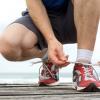CYBERMED LIFE - ORGANIC & NATURAL LIVING
CYBERMED LIFE - ORGANIC & NATURAL LIVING
 Exercise is any bodily activity that enhances or maintains physical fitness and overall health and wellness. It is performed for various reasons, including increasing growth and development, preventing aging, strengthening muscles and the cardiovascular system, honing athletic skills, weight loss or maintenance, and also enjoyment.
Exercise is any bodily activity that enhances or maintains physical fitness and overall health and wellness. It is performed for various reasons, including increasing growth and development, preventing aging, strengthening muscles and the cardiovascular system, honing athletic skills, weight loss or maintenance, and also enjoyment.
Frequent and regular physical exercise boosts the immune system and helps prevent certain "diseases of affluence" such as coronary heart disease, type 2 diabetes, and obesity. It may also help prevent stress and depression, increase quality of sleep and act as a non-pharmaceutical sleep aid to treat diseases such as insomnia, help promote or maintain positive self-esteem, improve mental health, maintain steady digestion and treat constipation and gas, regulate fertility health, and augment an individual's sex appeal or body image. Childhood obesity is a growing global concern, and physical exercise may help decrease some of the effects of childhood and adult obesity. Some care-providers call exercise the "miracle" or "wonder" drug—alluding to the wide variety of benefits that it can provide for many individuals. Aside from the health advantages, these benefits may include different social rewards for staying active while enjoying the environment of one's culture. Many individuals choose to exercise publicly outdoors where they can congregate in groups, socialize, and appreciate life.
In the United Kingdom two to four hours of light activity are recommended during working hours. This includes walking and standing. In the United States, a 1995 CDC/ACSM consensus statement and a Surgeon General's 1996 report state that every adult should participate in moderate exercise, such as walking, swimming, and household tasks, for a minimum of 30 minutes daily.